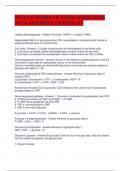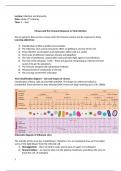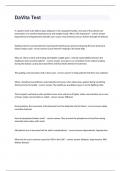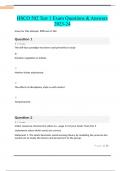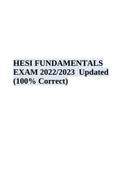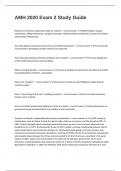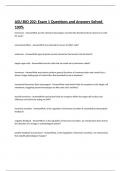Exam (elaborations)
BCH210 RUNBACK EXAM QUESTIONS WITH ANSWERS GRADED A+
- Course
- Institution
BCH210 RUNBACK EXAM QUESTIONS WITH ANSWERS GRADED A+ Lactate dehydrogenase - Answer-Pyruvate + NADH --> lactate + NAD+ Regenerates NAD+ for glycolysis when O2 is unavailable; in red blood cells, lactate is always produced since no mitochondria Cori cycle - Answer-1. Lactate is produced ...
[Show more]
